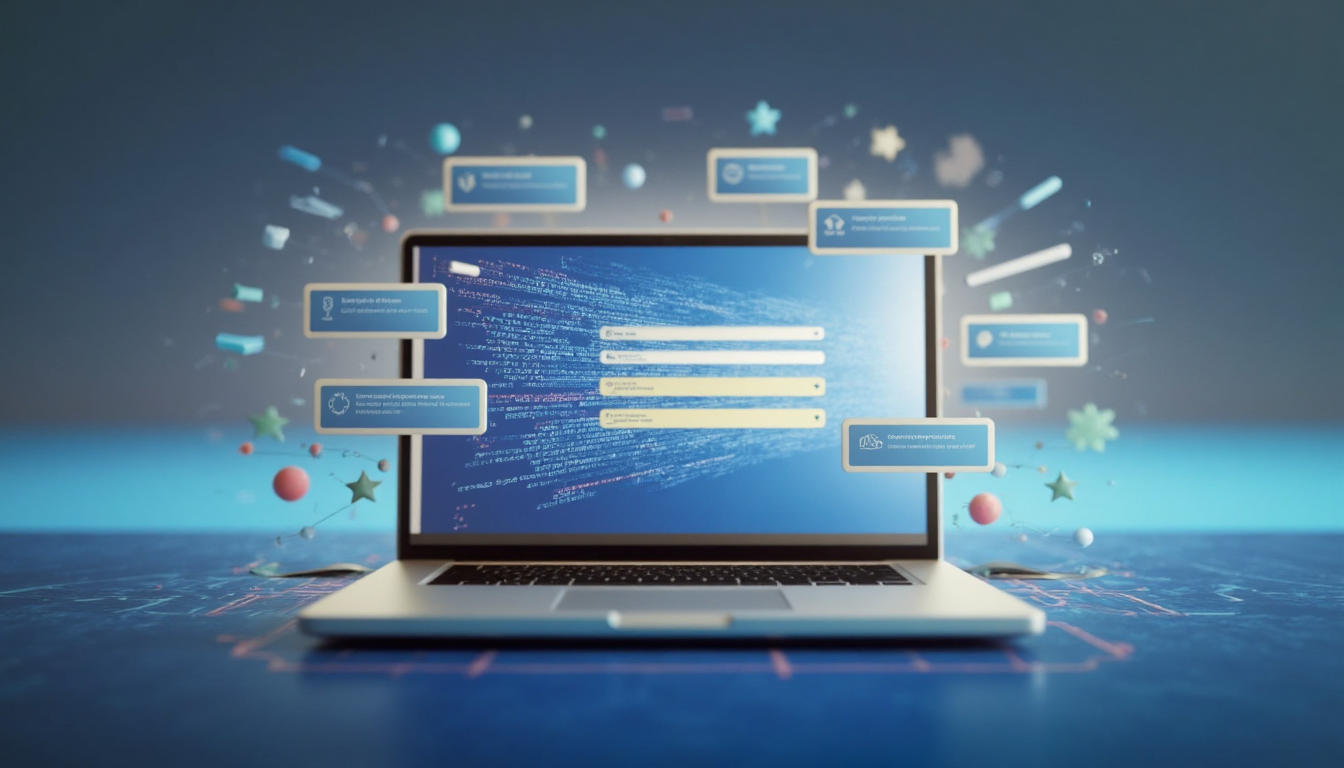The Hidden Costs of Manual Threat Modeling

Have you thought of how much manual threat modeling is really costing your business?
Your security teams are drowning in complex architectures, compliance demands, and fast-moving development cycles. Yet, they’re stuck using outdated and manual processes that slow everything down. Spreadsheets, whiteboards, and endless meetings aren’t cutting it anymore.
Manual threat modeling is inefficient, error-prone, and unsustainable at scale. It slows down teams, introduces human mistakes, and creates problems that leave your organization exposed. All these could be happening right now, while attackers are waiting for the right moment to exploit one of those overlooked vulnerabilities.
Table of Contents
- How Manual Threat Modeling Slows Your Teams Down
- Inconsistent Threat Modeling Puts Your Compliance at Risk
- Manual Threat Modeling Misses Critical Security Risks
- How Manual Threat Modeling Increases Costs and Slows Business Growth
- Why Enterprises Are Replacing Manual Threat Modeling with AI
- The Future of Threat Modeling Is Automated
How Manual Threat Modeling Slows Your Teams Down
Isn’t it a bit odd how security teams are spending weeks manually mapping out threats? (I mean, we’ve already landed on the moon decades ago) It’s killing productivity. While development moves fast, security is stuck in slow and repetitive cycles that drag down release timelines and frustrate the team.
Security reviews take too long
Manually mapping out threats means your security teams must review every system component, list all possible attack scenarios, and document mitigations one step at a time. And this process takes weeks. So, not only are you wasting resources, but you’re also delaying new features and forcing developers to wait for security approval before pushing updates.
Teams work in silos, leading to miscommunication
Aside from being slow, manual threat modeling creates misalignment. Security, development, and compliance teams work separately, with security teams identifying risks after development has already started. By the time vulnerabilities are found, developers have to rework their code, wasting even more time.
Threat models don’t scale with DevSecOps
DevSecOps is all about rapid releases while security is being integrated into the entire SDLC. Where’s the place of manual threat modeling in that process? Nowhere. Every time an application changes, security teams must redo their threat models from scratch. This makes it impossible to scale security across multiple applications and teams without major slowdowns.
Inconsistent Threat Modeling Puts Your Compliance at Risk
Regulations like NIST, ISO 27001, GDPR, and SOC 2 require organizations to have a structured approach to identifying and mitigating security risks. Threat modeling is a key part of that process, but if it’s done manually, it’s often inconsistent, incomplete, and outdated.
Manual threat models are incomplete and hard to audit
Security teams using spreadsheets and static documents usually miss threats or document them without consistency. When auditors review your security processes, they expect a clear, structured, and repeatable approach to threat modeling. If they find gaps or outdated information, it raises red flags that could lead to compliance violations.
Missed risks can lead to regulatory fines and breaches
It wouldn’t even be surprising if security gaps go unnoticed because of your poorly documented or inconsistent threat model. And if those gaps result in data breaches, count on regulators to impose heavy fines, especially GDPR and SOC2, where failure to properly assess and mitigate risks is a direct violation.
Manual processes don’t scale with changing regulations
Keeping up with how often compliance requirements change is nearly impossible. Especially with manual threat modeling. Think about it, how do you expect to update your security documentation without the risk of falling out of compliance if you’re doing your security reviews by hand?
Manual Threat Modeling Misses Critical Security Risks
Attackers are already using automation, AI, and advanced techniques to exploit vulnerabilities faster than ever. If your security team is still relying on static documents and outdated processes, you’re leaving gaps that attackers can easily exploit.
Threat models become outdated too quickly
Manual threat modeling is slow and reactive. By the time a threat model is completed, the application may have already changed, introducing new risks that weren’t accounted for. Without continuous updates, security teams are making decisions based on outdated information that only increases the attack surface.
Missed vulnerabilities lead to breaches
When security teams manually assess risks, they often focus on known threats while missing possible attack vectors. This is especially dangerous in cloud environments, where misconfigurations, API vulnerabilities, and supply chain risks can’t always be identified using traditional methods. Without automation, you wouldn’t have the visibility needed to detect and mitigate these new threats.
Security policies are applied inconsistently
Security is supposed to be embedded into EVERY stage of the development cycle, but manual threat modeling makes it hard to enforce policies across multiple teams. Different teams document threats differently, which leads to inconsistencies in security controls, misaligned risk assessments, and gaps in protection. This lack of standardization will weaken your overall security posture if it hasn’t already.
Manual processes don’t scale with DevSecOps
Modern development cycles move fast, and manual threat modeling creates a bottleneck. Security teams can’t keep up with rapid feature releases which leaves developers to push code without thorough risk assessments. This increases the chances of vulnerabilities making it into production, where they’re much harder and more expensive to fix.
How Manual Threat Modeling Increases Costs and Slows Business Growth
Security is essential, but inefficient processes drive up costs faster than you can say “manual threat modeling sucks.” Speaking of manual threat modeling, it needs more time, more people, and more effort, and the financial impact is so much more than the labor. Delayed product releases, compliance risks, and incident response expenses all add up, making manual security assessments a growing liability.
Security teams spend more time and resources
Manual threat modeling takes weeks, requiring skilled security professionals to review every component, document risks, and validate mitigations. Here you’re looking at higher labor costs and security teams that are constantly overburdened, which slow down other critical security initiatives.
Delayed releases hurt revenue
Every delay in security assessments pushes back product releases, which directly impacts business revenue. If security can’t keep up with development, new features, updates, and innovations are also delayed. You’re basically giving your competitors an edge. And for SaaS and cloud-driven businesses, faster time-to-market is a competitive necessity.
Missed threats lead to expensive breaches
Manual processes are prone to human error. Imagine a single overlooked security gap that can lead to a very expensive breach, with expenses including incident response, legal fees, regulatory fines, and reputational damage. Remember, the cost of prevention is always lower than the cost of a breach.
Why Enterprises Are Replacing Manual Threat Modeling with AI
Enterprises need a faster and more automated approach that ensures accurate risk assessments while keeping up with DevSecOps workflows. That’s why they’re moving to AI-powered threat modeling.
Threat modeling happens in seconds, not weeks
SecurityReview.ai automates the entire threat modeling process, delivering AI-driven risk assessments in seconds. Instead of spending weeks manually mapping threats, security teams get instant insights, which allows them to focus on mitigation instead of documentation.
Risk assessments stay consistent and up to date
Manual processes lead to incomplete and outdated threat models, increasing security gaps and compliance risks. But with AI, you’re sure that every risk assessment is structured, repeatable, and aligned with frameworks like NIST, ISO 27001, and SOC 2.
Seamless integration with DevSecOps workflows
It’s so wrong how security becomes the reason why product releases get delayed. AI-powered threat modeling integrates directly into CI/CD pipelines, enabling real-time security enforcement. Developers get immediate visibility into risks so that they can fix security issues before they reach production without disrupting release schedules.
The Future of Threat Modeling Is Automated
Manual threat modeling is too slow, inconsistent, and resource-intensive to keep up with modern security demands. Security teams spend weeks manually identifying threats, updating static documents, and trying to enforce security across fast-moving development cycles. This simply will not work anymore.
AI-powered solutions like SecurityReview.ai eliminate these inefficiencies by automating threat modeling in real time, ensuring continuous risk assessments, and enforcing security policies at scale. Instead of manually reviewing every system change, AI detects potential threats instantly, provides structured risk reports, and integrates with CI/CD pipelines to align security with development.
Enterprises that automate threat modeling now will strengthen security, accelerate development, and stay ahead of threats. See how SecurityReview.ai transforms security workflows! Schedule a demo today.
FAQ
What is AI-powered threat modeling, and how does it work?
AI-powered threat modeling automates the process of identifying security risks in software architectures. It analyzes system components, attack paths, and compliance requirements in real time, generating structured risk assessments. AI enhances accuracy by detecting threats faster than manual processes and integrating directly into development pipelines.
How does AI improve threat modeling compared to manual methods?
Manual threat modeling is slow, inconsistent, and difficult to scale. AI eliminates delays by instantly assessing risks, ensuring real-time updates, and providing standardized security recommendations across teams. This reduces human error, improves collaboration, and allows security to keep pace with DevSecOps workflows.
Can AI completely replace human threat modeling experts?
No. AI enhances threat modeling by automating repetitive tasks, detecting common attack vectors, and ensuring compliance alignment. However, human expertise is still required for contextual risk analysis, business impact assessment, and decision-making on mitigation strategies. AI and human oversight together provide the most effective approach.
How does AI-powered threat modeling help with compliance?
Frameworks like NIST, ISO 27001, GDPR, and SOC 2 require structured risk assessments. AI ensures that threat models are consistent, up to date, and aligned with compliance requirements by automating documentation and reporting. This reduces audit risks and improves regulatory adherence.
Can AI-powered threat modeling integrate with existing DevSecOps workflows?
Yes. AI-driven solutions like SecurityReview.ai integrate directly with CI/CD pipelines, issue trackers, and security orchestration tools to provide continuous risk assessment without slowing down development. This ensures that security checks happen automatically at every stage of the software development lifecycle.
What are the cost savings of using AI for threat modeling?
AI reduces costs by cutting manual effort, reducing security review timelines, and preventing costly security incidents. Enterprises save on labor, avoid revenue loss from delayed releases, and minimize breach-related expenses such as legal fees and compliance fines.
How accurate is AI in detecting security threats?
AI models are trained on real-world attack patterns, security best practices, and compliance standards to identify risks with high accuracy. However, effectiveness depends on data quality, continuous learning, and expert validation to ensure false positives and false negatives are minimized.
How do I transition from manual to AI-powered threat modeling?
Start by identifying pain points in your current threat modeling process—such as long review times, inconsistent risk assessments, or compliance challenges. Implement an AI-driven solution like SecurityReview.ai, integrate it with your DevSecOps pipeline, and gradually scale adoption while maintaining expert oversight.
Is AI-powered threat modeling suitable for all industries?
Yes. AI-driven threat modeling benefits finance, healthcare, government, technology, and any industry with complex security and compliance needs. Enterprises handling sensitive data or operating in regulated environments gain the most value from automation.







.png)
.png)
.png)





